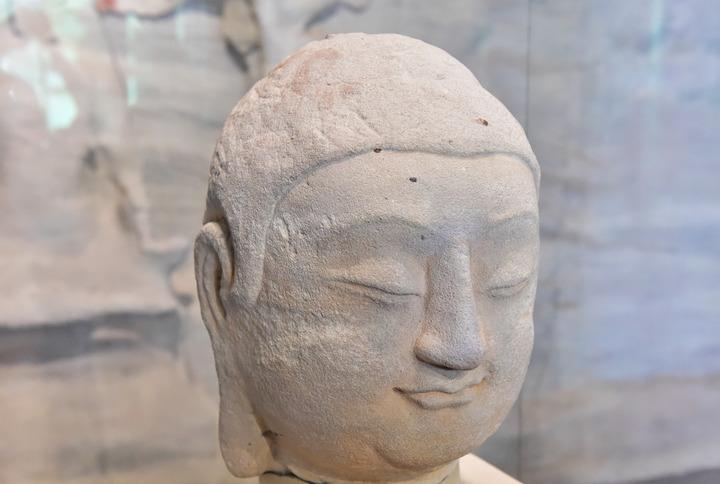Video loading...
Taiyuan, 24 Jul (Xinhua) -- After nearly a hundred years of wandering overseas, the Tianlongshan Grottoes' "8th Cave North Wall Lord Buddha Head" debuted on the 24th in Taiyuan on the "Return of National Treasures on the Road to Rejuvenation" special exhibition, which will be displayed here for a long time. This is the first precious lost cultural relics returned from Japan to the Tianlongshan Grottoes in nearly a hundred years.
"It's like seeing a loved one who has been separated for a long time, and I think it's a lot of thoughts, and I think its smile is particularly touching." Yu Hao, director of the Tianlongshan Grotto Museum in Taiyuan City, who has worked here for 24 years, said that the cultural relics can better present their unique cultural values and historical connotations by returning to the humanistic and natural environment in which they were born.
Located on the west mountain of Taiyuan, the Tianlongshan Grottoes were first excavated in the Northern Dynasty and Eastern Wei Dynasty, and were excavated in different periods such as Northern Qi, Sui and Tang, and there are 25 existing caves and more than 500 statues, which are national key cultural relics protection units.

This is the "Main Buddha Head of the North Wall of Cave 8" of the Tianlongshan Grottoes photographed at the Tianlongshan Grottoes Museum in Taiyuan City on July 24. Photo by Xinhua News Agency reporter Chai Ting
In the 1920s, the Tianlongshan Grottoes were excavated on a large scale, more than 240 statues were stolen, and more than 150 statues became foreign museums and private collections.
Cave 8 is the only Sui Dynasty grotto in Tianlong Mountain, with a history of more than 1400 years, and its exquisite carving has set a precedent for the graceful and plump statue style of the Tang Dynasty.
In September 2020, the State Administration of Cultural Heritage monitored and found that Japan's Toei International Auction Co., Ltd. planned to auction the Buddha's head, and communicated with the auction house in time to withdraw the auction. After communication with the State Administration of Cultural Heritage, Zhang Rong, chairman of the auction house, negotiated with the holders of Japanese cultural relics to complete the purchase and donated the Buddha's head to the Chinese government free of charge. On December 12, 2020, the Buddha's head arrived safely in Beijing.
In order to welcome the return of the Buddha's head, the local cultural relics department used high-tech means to arrange a new home for it, and through exhibitions and multimedia technology, told the past and present lives of the Tianlongshan Grottoes.
"The main Buddha on the north wall of Cave 8 is close to the mountain, and the water seepage from the fissure has a great impact on the weathering of the grotto, so we created a constant temperature and humidity environment for the returning Buddha head in the exhibition hall, which is conducive to long-term preservation." Yu Hao said.
Donor Zhang Rong said that the donation of the Buddha's head is of great significance in his life, and a sense of national pride and honor is born.
"I hope that through this donation, it will play a role in inheriting the past and encouraging more people to participate in the cause of the return of cultural relics." He said.
Li Qun, director of the State Administration of Cultural Heritage, said the Chinese government reserves the right to recover historically stolen and illegally exported cultural relics, including the loss of cultural relics from the Cave Temple. During the "14th Five-Year Plan" period, the work of resource investigation, legal improvement, and capacity building will be carried out in an orderly manner, and through all possible and necessary channels, more cultural relics will be recovered and returned. (Reporters Lv Mengqi, Shi Yucen, Wang Xuetao, Xu Wei)